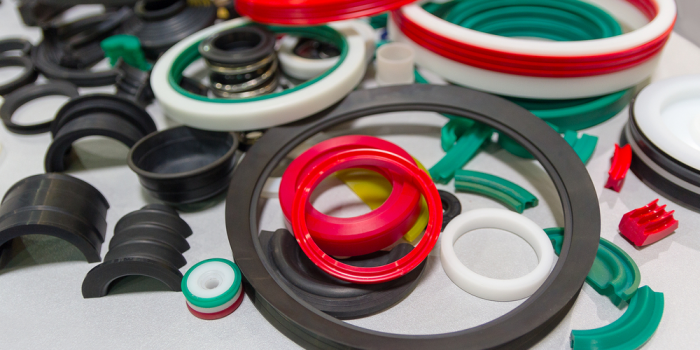The world of rubber seals and their applications, despite seemingly being basic, is a complicated and extremely important aspect of engineering that oftentimes demands custom solutions to specific needs. There are thousands of seal applications across a wide variety of industries, each of these applications demanding a sealing solution made to the specifications of the system in need of a seal.
More importantly, there are also a wide variety of basic materials used in the manufacturing of seals, and the type of material used in making a seal depends on the system in need and the intended application of the seal. There are seals that need to handle more friction than others, some need to be more heat resistant, and yet others need to be able to withstand low temperatures.
With that said, let’s look at some of the most common types of materials used in making rubber seals and the applications of each type of seal.
Nitrile
Nitrile, or NBR, is a synthetic copolymer of acrylonitrile and butadiene, and a popular choice for seal applications requiring high oil resistance. It is also additionally resistant to liquid fuels and solvents. NBR has high abrasion resistance and is most often used in applications with Nitrogen or Helium. Due to its high oil and solvent resistance, it is most often used in aerospace and automotive fuel-handling applications.
Ethylene-Propylene Diene Monomer
EPDM is one of the most common raw materials used in seal manufacturing. Composed of copolymerized ethylene and propylene, with an additional diene monomer added before being vulcanized with sulfur, this seal-building material has high thermal and chemical resistance, is extremely useful for electrical insulation and also has good resistance to weather. It maintains flexibility at low temperatures and has a longer lifespan than most other seal materials. EPDM is most commonly used in automotive cooling systems and cold rooms or other types of refrigerated environments.
Silicone
Silicone rubber seals are made of high-polymer vinyl methyl polysiloxanes and are one of the purest types of seals, which makes them very popular for hygienic applications. They have excellent high-temperature resistance and are also resistant to UV, ozone and general weather conditions. However, they have poor tensile strength and are not very resistant to wear. Silicone seals are most often used in pharmaceutical environments and for food and beverage packaging.
Neoprene
Neoprene is a synthetic material specially developed for conditions requiring high chemical resistance and moisture resistance. It also has high impact, abrasion and flame resistance. Neoprene seals are extremely suitable for use in electronics and aquatic environments.
Fluorocarbon
Fluorocarbon is in a class of elastomers that are comprised of copolymers of hexafluoropropylene and vinylidene fluoridae, terpolymers of tetrafluoroethylene, vinylidene fluoride and hexafluoropropylene, as well as Perfluoromethylvinylether. The entire family of elastomers is categorized under the designation FMK. This class of seals is useful for applications involving high temperature and chemical resistance. They have a temperature range of -30C to 315C, which makes them the materials with the highest temperature resistance. FMK is most often utilized in aquatic sealing applications and aerospace seal applications for fuel lubricant and hydraulic systems.
Seals are a complicated, yet simple piece of engineering that requires matching the right materials to the right applications. Having a good material selection guide will be of immense help when selecting the right material for your seal applications.


